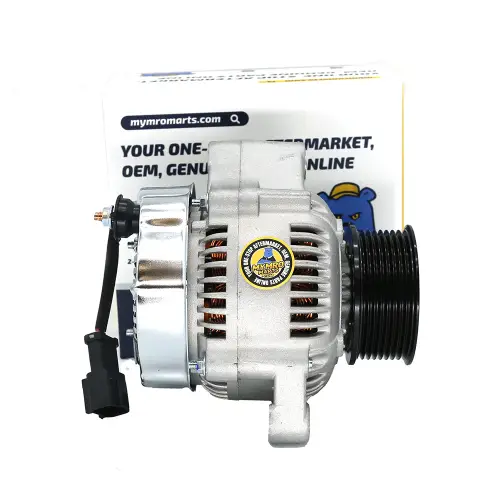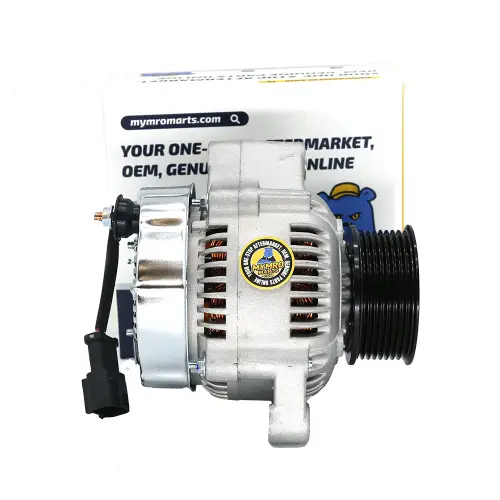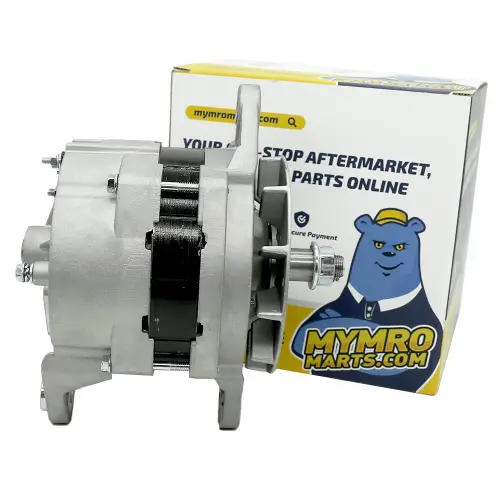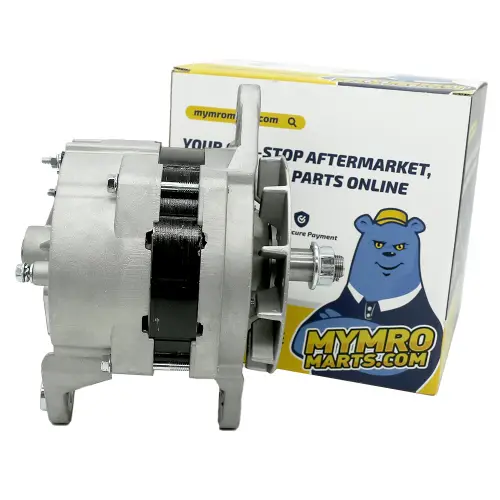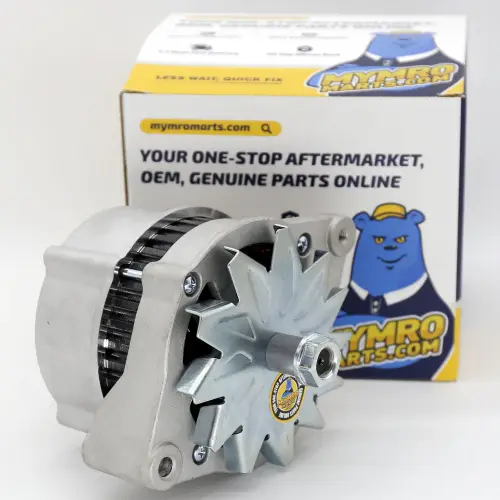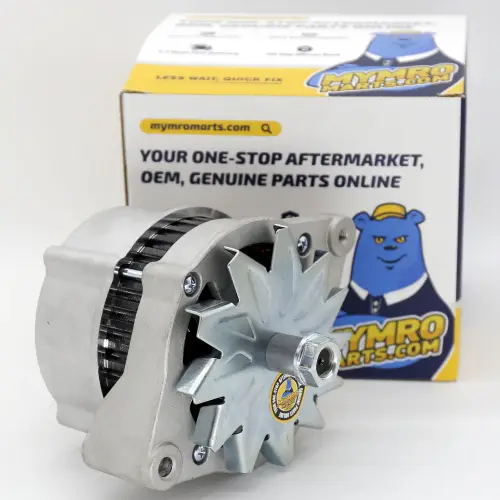Alternator Replacement: Things You Need to Know
How to Replace an Alternator
It could be necessary to replace the alternator in your construction machinery in order to ensure the proper operation of the electrical system. Whether you're replacing a faulty alternator or one with a higher output, it's critical to take the proper precautions to guarantee a successful repair. This article will walk you through every step of how to replace an alternator in your construction machinery in detail.
Step 1: Preparation
Park your construction machinery on a level surface and engage the parking brake.
Disconnect the negative terminal of the battery to prevent any electrical accidents.
Step 2: Locate the Alternator
To determine where the alternator is located, see the owner's manual for your construction machinery.
The alternator is normally located close to the front of the engine in most construction machinerys and is driven by a belt attached to the engine crankshaft.
Step 3: Remove the Serpentine Belt
Locate the tensioner pulley and spin it using a wrench or socket to release the tension on the serpentine belt.
Carefully release the tensioner after sliding the belt off the alternator pulley.
Step 4: Disconnect Electrical Connections
Identify and disconnect all electrical connections attached to the alternator, such as wiring harnesses and connectors.
Take note of the connections for easier reassembly later.
Step 5: Remove Mounting Bolts
Locate and remove the mounting bolts that secure the alternator to the engine or bracket.
Keep track of the bolts and any accompanying brackets for reinstallation.
Step 6: Install the New Alternator
Position the new alternator in place, aligning it with the mounting holes.
Tighten the mounting bolts securely, but be cautious not to overtighten and damage the threads.
Step 7: Reconnect Electrical Connections
Reconnect all electrical connections to the new alternator, ensuring they are securely fastened.
Double-check that the connections match the original configuration.
Step 8: Reinstall the Serpentine Belt
Use the belt routing diagram (often found on a sticker in the engine compartment) to guide you in reinstalling the serpentine belt.
Rotate the tensioner pulley to create slack and carefully slide the belt back onto the alternator pulley.
Step 9: Reconnect the Battery
Reconnect the negative terminal of the battery.
Ensure that the connection is tight and secure.
Step 10: Test and Verify
Check to see if the new alternator is working properly by starting the construction machinery.
Check the electrical system and battery voltage to make sure everything is operating as it should.
Your construction machinery's alternator can be effectively replaced if you follow these detailed instructions. Always drive cautiously, refer to your construction machinery's manual, and be aware of any unique regulations for your individual make and model. It is advised to get expert help from a licenced mechanic if you are unsure or uneasy completing this task on your own. The electrical system of your construction machinery will run more smoothly if your alternator is properly maintained and replaced. If required, our aftermarket alternators are available for various vehicle models.
How Long Does It Take to Replace an Alternator
We frequently worry about how long does it take to replace an alternator. Depending on the aforementioned conditions, changing an alternator can often take anywhere from one to three hours. This time estimate takes into account the time needed for planning, assembly, testing, and disassembly. Several variables, including amount of experience, construction machinery model, and the difficulty of the procedures involved, can affect the actual time. To clarify the process and variables involved in replacing an alternator, this article will break down these affecting aspects.
The amount of experience a person has affects how long it takes to replace an alternator. Because they know the steps to take and how to accomplish them, seasoned technicians can typically do the job faster. They are aware of the proper methods for removing and installing the alternator as well as for solving any potential issues.
Engine design and the way the generator is mounted may vary between construction machinery models. Alternators on some construction machinerys may be simpler to access, while those on others might need additional removal and installation stages. Hence, the length of time it takes to replace an alternator depends on the type of construction machinery.
The amount of time needed to replace an alternator might vary depending on a number of factors, including the construction machinery model and skill level. These elements consist of
Equipment and tool availability: During the replacement process, it's critical to make sure that all necessary tools and equipment are accessible and readily available.
Issues and difficulties: During the alternator replacement process, issues and difficulties could arise due to tricky bolt placements or other fasteners. Some problems could need more time and endurance to fix.
Several variables influence when an alternator has to be replaced. Experience level and construction machinery type are two of the key determining elements, albeit it is impossible to provide an exact time frame. The replacement time will also be influenced by the accessibility of tools and equipment as well as any potential difficulties. When executing a replacement, it is advised to be well-prepared and give yourself enough time to finish the job. To ensure a secure and easy alternator replacement, it is advised to enlist the aid of a qualified professional mechanic. We have massey ferguson alternator replacement and so on if needed.
How Often Should an Alternator Be Replaced
An important part of a construction machinery that powers the electrical system is the alternator. Alternators, however, deteriorate over time and eventually stop working. So how often should an alternator be replaced? This post will analyse this query and offer some recommendations to aid in your decision-making.
The quality of the brand, the type of construction machinery, the mileage, and maintenance are only a few of the variables that affect alternator wear and service life. Alternators typically have a lifespan of between 5 and 10 years. It is important to remember that this is simply a broad reference range.
The alternator's lifespan must be extended by routine maintenance. It is advised that routine inspections and maintenance be carried out in accordance with the manufacturer's maintenance schedule. This includes cleaning connectors, changing worn belts, and occasionally inspecting the electrical system. If you give it routine maintenance and make sure the alternator has no evident issues, it might last longer.
When an alternator begins to malfunction, replacement should be taken into account. Some typical indications that an alternator needs to be replaced include the ones listed below:
Battery level keeps dropping: An alternator issue may be present if you observe that the battery level keeps dropping even after charging.
A malfunctioning alternator may be the cause of a construction machinery's charge light turning on or flashing repeatedly.
Unusual sound or vibration: If the alternator makes an unusual sound or causes a noticeable vibration, this can indicate that one of the internal alternator parts is broken.
Consult with a qualified professional specialist if you are unsure about the state of your alternator or when it needs to be changed. By looking at and testing the alternator, they can determine its state and give you more detailed advice.
When to replace alternator vary depending on a number of variables; in general, there is no defined plan. Your electrical system's reliability depends on routine maintenance, watching out for potential problems, and periodically inspecting the alternator's condition. Your alternator will continue to function effectively if you adhere to the manufacturer's recommendations and make choices based on the current situation.
How Much to Replace an Alternator?
Alternator replacement is generally not scheduled in advance; instead, it relies on a number of variables. For the stability of your electrical system, regular maintenance, watching out for potential problems, and inspecting the alternator's condition on a regular basis are required. Your alternator will continue to work properly if you adhere to the manufacturer's recommendations and make judgements depending on the current situation.
The following factors, among others, affect the price of replacing an alternator:
Manufacturer and model of the construction machinery: Depending on the make and model of the construction machinery, a different alternator type and price may be needed. A more pricey alternator might be necessary for some specialised or high-end models.
Cost of parts: One of the main elements in determining the cost of replacement is the price of the alternator itself. The price disparity may also be influenced by brand and quality.
Labor costs: The manual labour involved in replacing the alternator varies based on the region and auto repair shop.
Extra expenses: In addition to the price of the alternator itself and labour charges, there can also be taxes, shipping fees, and the cost of other connected parts that need to be replaced.
It is impossible to provide particular cost statistics because every construction machinery and location is unique. A average alternator replacement will cost between $200 and $800, according to market research, but this is only an estimate.
It's crucial for construction machinery owners who need to replace their alternators to set a suitable budget and make a thought-out choice. You can decide using the information below:
For quotations, consult many repair shops: In order to compare and select the greatest fit, ask several repair shops for their estimates and service options.
Evaluate the component quality: Choose high-quality alternator parts whenever possible. Even though they could be slightly more expensive, they often offer superior performance and a longer lifespan.
To get better support and service when needed, be aware of and compare the warranty policies of various brands and suppliers before purchasing an alternator.
Each construction machinery owner's experience with alternator replacement cost vary depending on a number of variables. You can choose the greatest alternator replacement choice for you with some research and careful consideration, ensuring that your car's electrical system continues to function. Keep in mind to do routine maintenance to increase the lifespan of your alternator and to get further information and direction from a qualified repair.
 Track Your Order
Track Your Order




